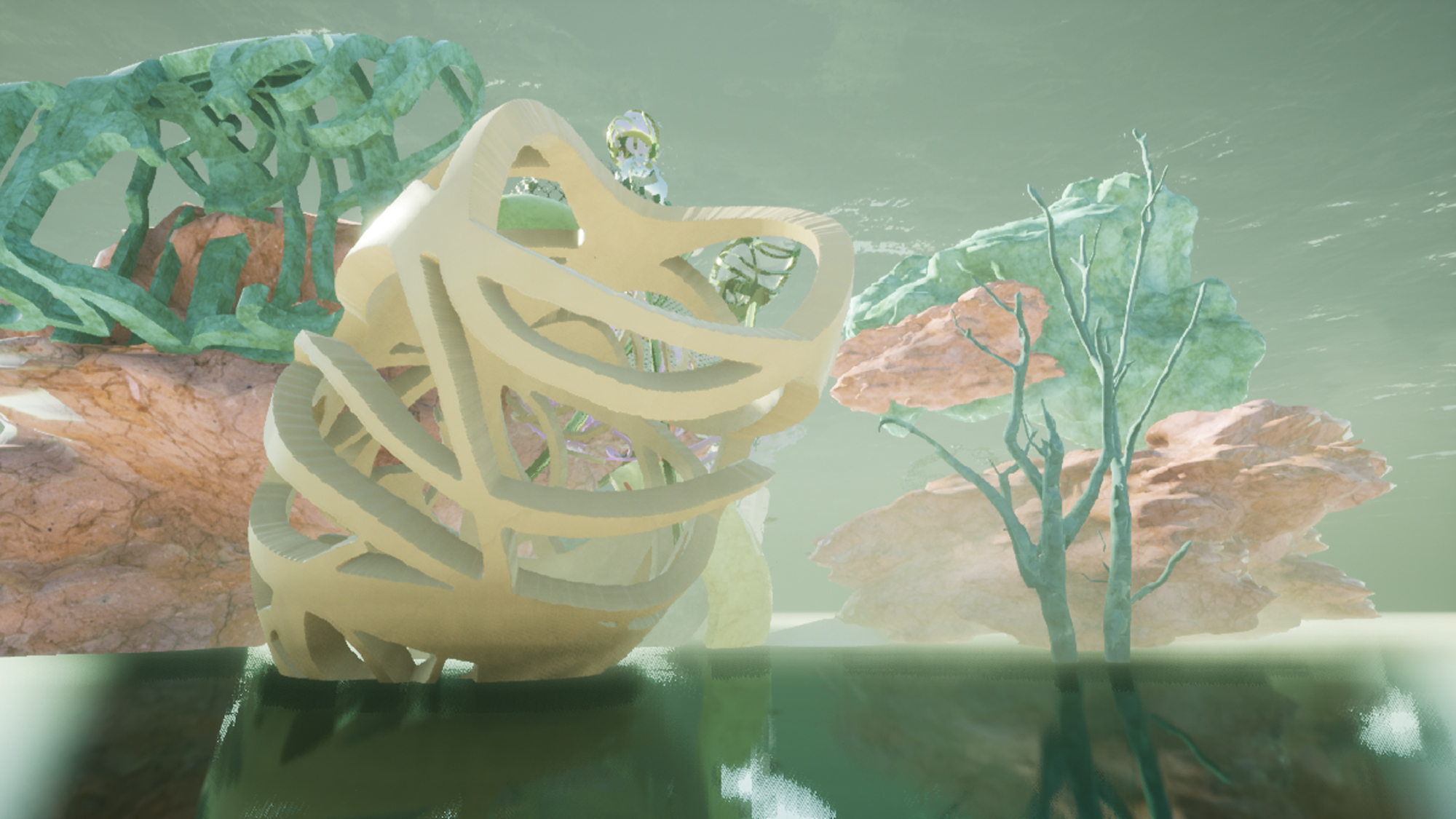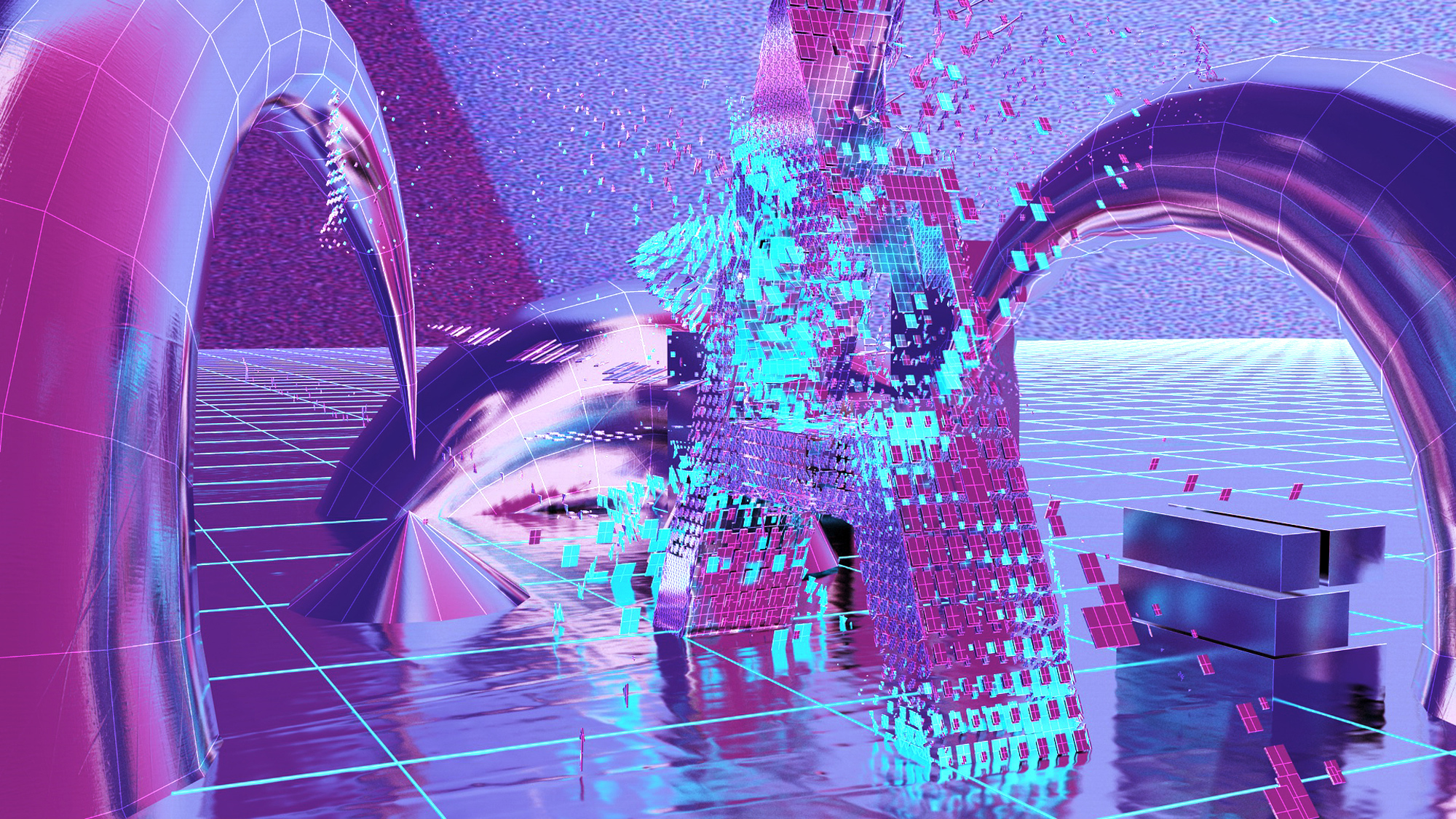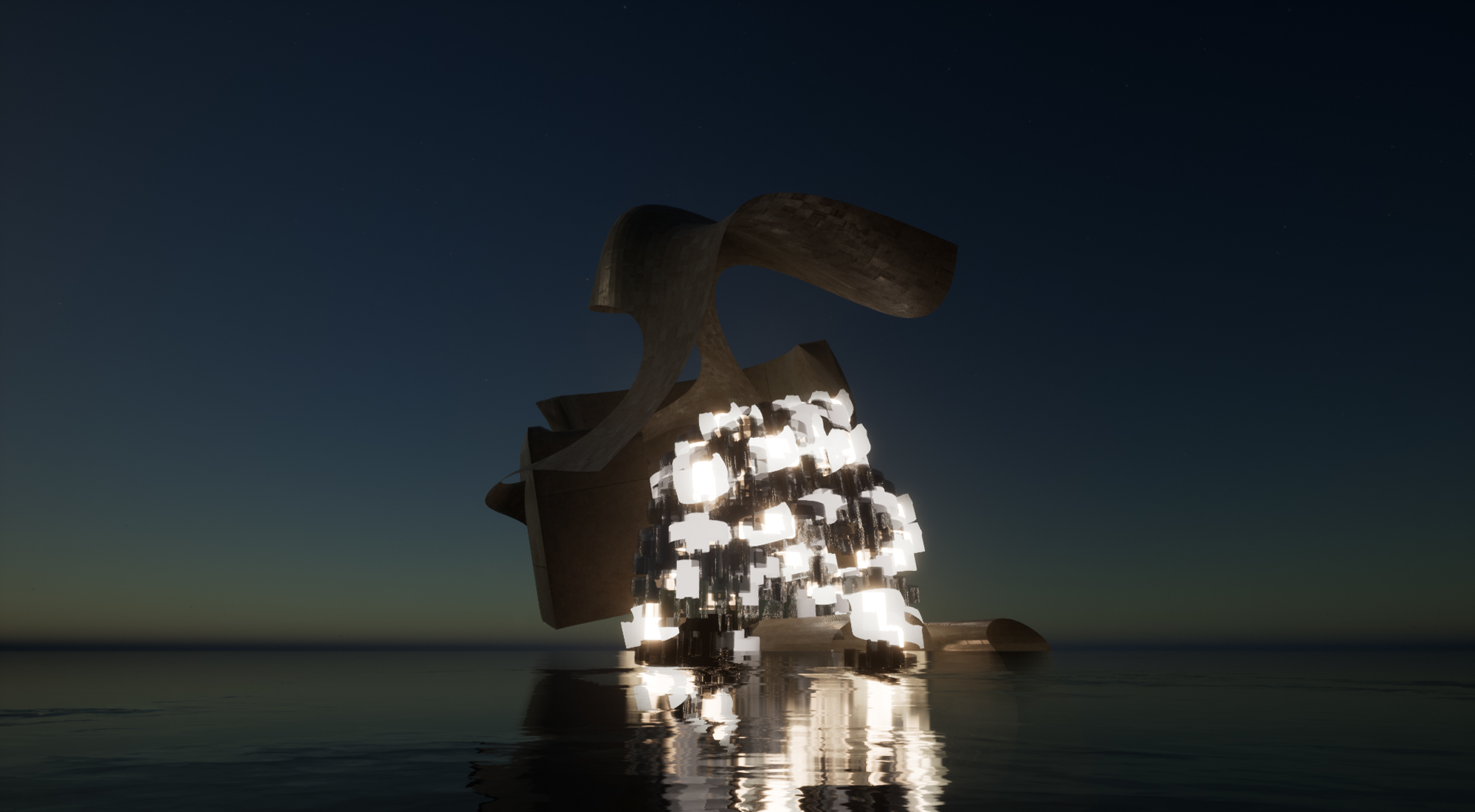M+M Alumna Stephanie Ibarra on What Can Be Lost in Translation, and Found
Stephanie Guadalupe Ibarra is a developing multidisciplinary artist and designer from Compton, California. She is a soon-to-be graduating senior at California Baptist University College of Architecture, where she will receive her B.Arch.

Stephanie knew nothing about what architecture was or could be until she attended Manuel Dominguez High School where she was drawn immediately to drafting. By college, she discovered a passionate interest in architecture and design. She was a semifinalist in the 2020 Walt Disney Imagineering design competition and was a competing applicant in Coachella’s 2020 TRASHed Art of Recycling competition. In 2020, she served as creative coordinator for the Compton Artwalk. In summer 2021, she opened Gallery 90220, a gallery run entirely by Compton natives dedicated to representing Black and brown communities, which has been featured by The New York Times, Gensler LA, UCLA’s School of Architecture, and Archinect as the newest Los Angeles-based gallery creating opportunities for those underrepresented in the city’s art community.
We spoke to Stephanie to learn more about her experience in Making+Meaning, what drives her interests in architecture and design, and what her plans are for the future.
What has your experience been like in Making+Meaning?
Making+Meaning made me feel so at home for a program that was hosted online. All of the instructors were incredibly helpful in ensuring students understood everything in lecture and dedicated time to helping troubleshoot any struggles in software handling. Many instructors were dedicated to getting to know us and really created the type of environment where we can feel free to ask questions and engage in fellowship with the other students. I loved every bit of it, and it made me wish all the more that I could have seen what this was like in person.
Can you talk about any projects of which you are particularly proud?
I am currently refining some old projects from the program but I am very proud of my projects from week two and four. My project from week two is known as Papel Picado, which focused on the material exploration of the Spanish phrase “papel picado,” which means ‘punctured’ or ‘minced’ paper. However, in basic English it is simply translated to ‘confetti.’ Yet, papel picado is not confetti. It serves a different purpose as an early art form in Mexico dating back to Aztecs for home decoration, holidays, parties, and outerskins of piñatas (which are deeply rooted in Catholicism). I explored this project through the contemporary parameters of using an industry standard software called Cinema 4D and Adobe After Effects. Through these softwares, I explored and created fragments within the letter A and manipulated its outerskin as though it were struck like a piñata. The fragments themselves were distorted to look like the delicate paper falling and flying out of the A as gravity took effect.
When creating this project, I was on a margin of choosing where its identity leaned. This project definitely felt like an extension of myself since it became deeply rooted in my heritage, but felt a default obligation to keep it in English. Not that SCI-Arc was forcing me to, but that as a multilingual person I have had to cater to an English-speaking audience. But what can one do if there is no appropriate enough word in translation to capture what you really want to say? This project was titled Papel Picado to get the attention of Spanish speakers everywhere that know about the material papel picado, while also functioning as a learning moment for non- Spanish speakers to learn how things can become lost in translation.

My project from week four was another project I am most proud of as I was working under the program director [M+M Coordinator and SCI-Arc faculty William Virgil], entitled Fish Bowl. The requirement was to create a park and include the familiarity of the letter D. The project itself explored different fonts used to make the park and adding context, scale, and creating a sense of mystery to some extent; to show parts of the project but never the whole. My project was initially influenced by visual elements of Guillermo Del Toro’s film The Shape of Water. Fish Bowl became an underwater park where viewers watch from a fish’s perspective while the videos slow pans throughout the experience, showing part of the objects, but never the whole.
How did your interest in architecture and design first develop?
I was pulled into architecture and design before I knew what the words truly meant. Since I could remember, I was always drawing what my future house would look like and fascinated with how theme park roller coasters were made. I watched films and read books with fantasy worlds that intrigued me. My mind was and always is curious. Right when I got to high school, I was assigned a draft tech class, and I remember wanting to drop the class because I had no idea what it was. I decided to stay just to see if it was worth my time. I was shown how to use a program called SketchUp and found myself drawn to it completely. We had the whole semester to work on the floorplans the teacher gave us, and I finished weeks earlier than most of my peers. It felt like a fun video game, and when I was done I just kept adding onto the work. Customizing artwork to put up, creating materials, adding a yard; whatever I felt would make it better. The teacher noticed how overboard I was on the project and asked me if I was interested in pursuing architecture. I remember not having any idea what that word for this was, but then ingrained it into my head as I started applying for colleges. College only made me fall into deeper love with architecture, since I got to learn how the fundamentals of design apply to everything related to it.

How have your approaches or interests changed both during and as a result of being in M+M?
During M+M, I changed my approach in my way of thinking of design, such as the way I create narratives while I make my work. I realized how in some design projects we won’t always have the time to develop a full narrative before we jump into making. This program was one of those cases. I learned to think quicker and develop my work faster. I learned how to prioritize what was most important element at hand in order to meet the deliverables needed the next day. I feel like I have become wiser from this. And it makes me look forward to what else I will learn from others in order to become a well-rounded designer.
What first drew you to apply for Making+Meaning?
As someone who was already following SCI-Arc via social media platforms and YouTube, I have had my eye on it for a while. I admire the visual quality SCI-Arc has and desired to reach that level so much that I started watching more tutorials online. I was doing things on my own time to develop my visual style with the softwares I had on hand to work with. I did not know about Making+Meaning at the time. .I kept up often to see what thesis students were up to, which also further developed my mind on what architecture can be molded into. Before I knew it, I applied for a NOMA scholarship and was accepted.

What was the most surprising discovery during your time in the program?
I think the most surprising discovery made during my time at this program was that both creating and finding meaning in what I do can be done at the same time. This is concept that was hard for me to grasp as someone who is heavily driven by developing narratives before almost anything. I am accustomed to conducting a lot of research and defining a problem before drawing anything on a piece of paper. It is very hard to do that when the only restraints you have are flexible in themselves and related to a project that isn’t necessarily a building. These projects were very abstract in the sense we had to figure out a lot for ourselves and put our own styles on it.
This program to some extent was creative improv for me in the best way possible. I was very accustomed to a rigid project brief that seems like I forgot how to set my own creative restraints. M+M allowed me to independently come up with my own restraints, especially since we had to meet deliverables every day and be ready to present our proejcts by the end of the week. I was able to break the mental barriers and go all out with the challenges and it feels amazing to see the work I was able to produce during the program.
What wisdom would you impart to future Making+Meaning applicants or students?
Don’t hold back in doing what you feel passionately about in these projects. Talk to other about your ideas, because for all you know it might become the project you are most proud of. Talk to your peers and help each other. We grow more when we collaborate with each other.
What are you most excited about moving forward, in terms of your future?
I am excited to get ready to apply for a master’s program at many graduate schools, including SCI-Arc. Aside from that, I am looking forward to the work I will be producing on my personal artwork to eventually show at a gallery that will host my work. Furthermore, I am excited to put what I learned in Making+Meaning to use in my future career that awaits me in architecture and design.